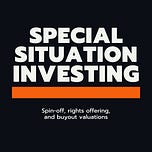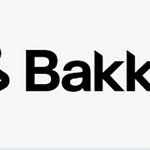Welcome to Episode 96 of Special Situation Investing.
For many of the companies we follow, last quarter’s results were filled with announcements of record cashflows, massive buyback plans and religious debt repayments. But there was a singular exception. One company’s quarterly report and conference call was, well, to put it bluntly…boring. No great changes were announced. No massive improvements in metrics were achieved. There was only slow, steady progress toward strategic objectives. The company was OTC Markets Group (OTCM).
The company
OTCM had its genesis back in 1913 as the National Quotation Bureau (NQB). The NQB was formed through the merger of two companies that compiled and disseminated securities information. Through the decades that followed, NQB filled a vital role in the U.S. market by publishing hard-to-come-by information on bonds and stocks. After changing hands and names multiple times, it was finally acquired by a group of investors led by the company’s current CEO, Cromwell Coulson, in 1997, and renamed OTC Markets Group in 2011. Today, OTCM’s mission is simple: to create better informed and more efficient financial markets. The company accomplishes this through three lines of business.
The first, an alternative trading system (ATS) called OTC Link, allows broker-dealers to publish quotes, communicate and negotiate directly. No third-party exchange is necessary.
Its second line of business, Market Data Licensing, provides access to data OTCM collects from the transactions occurring across its markets and ATS, as well as financial and compliance data for over 12,000 securities. The majority of its 27,000 professional and 12,000 non-professional users access the data via distributers such as Bloomberg, REDI Technologies and Thomson Reuters.
The final line of OTCM’s business, Corporate Services, provides three tiers of markets through which companies can list publicly. The top tier is the OTCQX Best Market. Companies on this market must meet stringent standards and many of them are foreign companies already listed on an international exchange and choose to list on the OTCQX to avoid the more burdensome requirements of U.S. exchanges. The second tier market is the OTCQB Venture Market. The level of standards is lower than OTCQX but still promotes price transparency and public disclosure. The companies listed on this market tend to be in the entrepreneurial and developmental stages. If a company does not meet the standards of either the OTCQX or the OTCQB, it can list on OTCM’s lowest tier market, the Pink Open Market.
While “boring” might describe its earnings report, there isn’t a less fitting word for the company itself. Given that for more than a century, OTCM, or it predecessor, has provided information vital to the financial system at-large, continually evolved with the times and technologies, and handily outperformed the market averages, we believe OTC Markets Group is best described as a top-notch, quality compounder. The lack of pizazz in the company’s latest report makes this the perfect time to remember why OTCM is such a high quality company.
What the heck is quality?
Ask any group of investors to list the characteristics of a quality company and no two answers would be alike. That said, we define quality with three characteristics borrowed from an investor we greatly admire—Chuck Akre. Akre famously uses a three-legged stool as an analogy for a quality company. The legs of the stool are: high returns on capital, a long runway, and shareholder-centric management with skin-in-the-game. This is the benchmark against which we will evaluate OTCM.
High return on capital
Of the three characteristics, the ability to create high returns on invested capital is supreme. Multiple closely related financial metrics—return on capital, return on equity, and return on invested capital (ROIC)—all attempt to capture this trait. For the math and science inclined among us, the equation for ROIC is shown below.
ROIC = (net income - dividends) / (debt + equity)
For those who’d rather take an icepick to the eye than bother with equations, here’s another way of explaining the concept. Consider a rental apartment purchased for $200,000. In the first year, assume $5,000 was received in after-tax rental income. Since dividends don’t apply in this example, taking the net income ($5,000) and dividing it by the sum of the debt and equity ($200,000) results in an ROIC of 2.5%. This simple example shows how ROIC gives a sense of a business’ quality by revealing how many dollars it creates for every dollar it invests.
Over the past ten years, OTCM produced ROIC as high as 104% and never lower than 42%. According to Morningstar.com, the company’s five-year average ROIC is 58%. This is equivalent to our hypothetical $200,000 rental house producing $116,000 of annual rental income. Compare this to a few of the current market darlings…Apple, Google, Tesla and Nvidia. These companies’ five-year average ROIC are 39%, 20%, 9% and 25%, respectively. OTCM is a clearly capital compounding machine.
The rate at which a company compounds capital is important for investors to consider because, as Charlie Munger says:
Over the long term, it’s hard for a stock to earn much better return than the business which underlies it earns.
If a company has low returns on its capital, the stock price will likely underperform the market. But a company with above-average returns will likely trounce the market over the long-term. OTCM exemplifies the later case. As the chart below shows, since 2010, OTCM outperformed the S&P 500 with an annualized return of 24.25% compared to the index’s 13.06%.
OTCM’s ability to compound is attributable to its efficient business model. While any aspect of OTCM’s business deserves a deep-dive of its own, here’s a list of the attributes we find most compelling:
OTCM requires surprisingly low capital expenditures. A business model centered on providing information, connecting buyers and sellers, and managing public listing markets all in today’s digital ecosystem is inherently capital-light. The little capex it did spend recently was used to upgrade its data centers and beef up the security and resiliency of its data systems.
OTCM is a high margin business. Given its asset-light nature, revenue increases can accrue with little additional cost. Compared to the S&P 500’s average net margin of approximately 11%, OTCM boasts a net margin of 26%.
For a company of its size, OTCM has surprisingly few employees (131, to be exact). This attribute is advantageous as employee-related costs are often one of the largest factors that decrease company margins, especially during inflationary periods.
If the FANG companies teach us anything, it’s that businesses built around network effects can be quiet successful. OTCM’s business is a market-based network of products, markets and participants. As arguably the first mover and near monopolist in the over-the-counter market, OTCM’s network could lead to a positive snowballing effect.
OTCM also benefits from the ability to cross-sell its products. For example, OTCM manages markets for companies to list publicly and then it repackages and sells the data about its markets and the companies on them to its Market Data Licensing customers. A virtuous loop is the result.
While high ROIC resulting from an efficient business model is a great foundation, OTCM will only be a great compounder if it can maintain those rates year after year. Even more fundamentally, it has to be able to survive for years.
Long runway
The second leg of Chuck Akre’s three-legged stool is “a long runway.” There are a couple aspects to this concept.
The first is the potential for growth. While high returns on capital is itself an indication there’s likely room for OTCM to grow, it’s important to consider how much of the total addressable market is already reached. In OTCM’s case, its addressable market is huge and still growing. For example, one area for OTCM’s growth is access to foreign companies. Already most of the listings on its three-tiered system are international. As noted in the latest report:
A key metric that many find surprising is that 75% of these securities are ADRs and foreign ordinaries of international issuers, generating almost 85% of the overall dollar volume on our markets in the first six months. We have become the market that connects the world's leading global companies with U.S. investors.
As more international companies, particularly from developing countries, seek access to the U.S. markets, OTCM is the logical access point.
Growth can also come from expanding into new areas. An area into which OTCM has recently expanded is digitization and tokenization. In its latest report, the company highlighted the following:
In early May, [OTCM] received federal approval to permit digital asset securities to be traded by broker dealers on OTC Link ATS. While not an immediate revenue generator, we see a long-term opportunity as more digital assets move into entities regulated by the SEC and FINRA.
The second aspect of a long runway is simply the ability to survive, aka resiliency. A company has to survive the ups and downs of the business cycle. Decades or centuries is the preferable timeframe if the full effect of compounding is be realized. One important factor in a company’s resiliency is its dependence on debt. As of the latest quarter, OTCM reported no debt and total liabilities amounting to a meager $47 million.
Although of less consequence, another factor that plays into the length of a company’s runway, at least in relation to its merits as an investment, is the size of its market cap. For example, it’s unlikely that Apple will be a 100-bagger from its current near $3 trillion market cap. A smaller market cap simply increases the probability that an investment in a company can grow by many multiples. It’s particularly helpful to compare markets caps between peers. Although not a direct comparison, exchanges with similar businesses like CME Group, Intercontinental Exchange, and CBOE Global Markets have market caps of $75 billion, $65 billion, and $16 billion, respectively, far larger than OTCM’s $660 million.
Given a long enough runway, it’s likely every company will for some period be run by management that Warren Buffett would describe as “a ham sandwich.” Buffett’s point is to look for companies so simple they can be run by such management. But it’s also a reminder to look for companies, such as OTCM, whose leaders aren’t ham sandwiches.
High-quality management
The last leg of Chuck Akre’s stool analogy is “high-quality management.” Much has been written by the investing community about the advantages of founder-led companies. Examples such as Apple, Amazon, Monster Energy, and Tesla attest to the power of having a founding visionary lead the company. While not the founder of OTCM, Cromwell Coulson has led the company as CEO since 1997 and guided the company through its transition to the digital era. His role in making the company what it is today can’t be overstated.
In addition to being quasi-founder led, OTCM also has high insider ownership. Of the 11.9 million shares outstanding, 4.1 million, or 34%, are owned by officers and directors of the company. As of OTCM’s latest annual report, Cromwell Coulson alone owned 3.3 million shares, with the difference spilt between the remaining eleven officers and directors.
Insider ownership is most often a positive attribute since management has skin-in-the-game with other shareholders. There is a risk, however, when one individual owns a lot of stock, and thus controls much of the voting power. But with so much of Coulson’s net worth wrapped up in the success of the company, and since he’s led the company for so many years, it’s unlikely he will act in any manner contrary to the benefit of other shareholders. This is further emphasized by the fact that 884,000 common shares, or 7.4% of the company, is locked in a trust, the beneficiaries of which are Coulson’s wife and children.
With this amount of skin-in-the-game, the officers, particularly Coulson, are highly incentivized to act in the long-term benefit of all shareholders.
Conclusion
OTC Markets Group is anything but boring. It has incredibly high rates of return on capital, its available runway appears long, and its management has massive skin-in-the-game. We’d be the first to admit that no 50,000-foot-view article can do the company justice. But it’d be hard to argue that by anyone’s standard, OTCM wouldn’t make the list as a quality company. At a minimum, it checks all the boxes of the three-egged stool analogy. If Akre’s opinion isn’t convincing enough, perhaps words from the Oracle of Omaha will drive the point home:
We want to buy a great business, defined as having a high return on capital for a long period of time, where we think management will treat us right.
OTC Markets Group has the markings of a great business. We think it’s a quality compounder.
And with that, we’ve wrapped up another episode of Special Situation Investing. We’ll end today as we always do by saying thank you to all of our listeners and readers. We want to particularly thank those of you who are fellow Substack creators and have done us the honor of recommending our work to your own readers. We can’t thank you enough for that vote of confidence. We’ll see you all next Saturday on another episode.

















Share this post